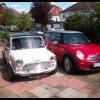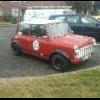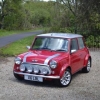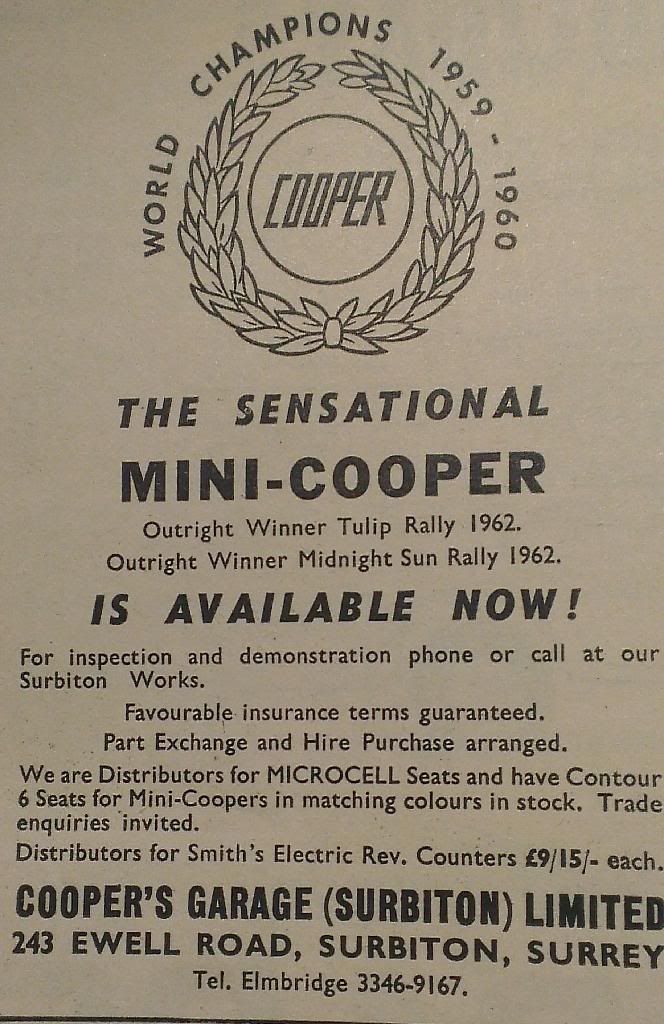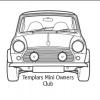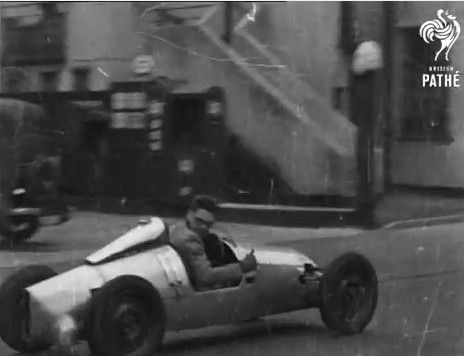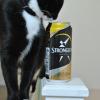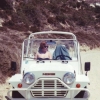
"Charles Cooper moved into 243 Ewell Road Surbiton in 1934. This was a corner shop at the Junction with Hollyfield Road, to the rear was the site that would become TDV. At that time it was a corrugated building, with a small stream 'out back'. It is rumoured that Charles kept ducks on the stream. The Cooper family would for awhile live in the flat, above the corner shop. The site was first known as Cooper's Garage and it operated a 24hr breakdown service. Later it would also posses a Vauxhall dealership.
Having the police station across the road, turned out to be an added bonus. Because as the Ambulance came down the hill (from the ambulance station) they would ring their bell, to inform the police station, they were attending an accident, on the Kingston By Pass. It is said that at this sound, Charles would crank up his breakdown truck and follow the emerging police car (before JPG was even born)!!
The growth of the Cooper company into a Formula One team is a story in it's self and very much involves Charlie's son John. Anyone wanting to know more should, purchase a copy of Doug Nye's excellent book Cooper Cars. The above picture was shamefully copied from this book, although he has subsequently agreed to its use.
By the end of the sixties the Cooper Formula One team was no more. For a while the site was used as a Cooper Cars Sales dealership. In the seventies it would become TDV."
The Austin Mini YOK 250 used as the Cooper prototype alongside a Cooper Formula Junior race car outside the Surbiton works.

Clive Abrahams adds, "I joined TDV Traffic Unit at its location at Hampton in November 1967. We moved into our new garage at Hollyfield Road, Surbiton on 1st April 1968. The new garage premises were owned by and leased to the Metropolitan Police by one John Cooper. The same john Cooper of Formulah1 fame, and the originator of the now famous Mini Cooper Car. The first Mini Cooper’s were converted from the standard machines at the premises now occupied by us."
In August 1968 we were supplied with the two Mini Coopers index numbers PYT767F and PYT768F, these replaced Wolseley 110’s, which were being phased out, these had the standard car for very many years. The remainder of our fleet at this time consisted of,
A Daimler Dart
A Sunbeam Tiger
Rover 2000TC’s
Triumph 2000’s
Land Rover 109 long wheel base
Jaguar 3.4s Type ‘s
This later car was destined to be the workhorse of Traffic Division for many years to come. However it had one major draw back. This related to the Area, which our Traffic unit patrolled. This consisted of the outer very rural parts of Surrey with fast open roads
Where the car ruled supreme and also the very urban inner part of Greater London such as Tooting, Balham and Wandesworth, where the manual clutch proved to be very hard on the leg muscles.
To this end the Mini Cooper was brought in to see if it would fill the niche as a more suitable vehicle for the inner London areas.
The main difference was how the vehicles would be used. Normal patrolling practise was for double manned cars. The mini’s would to be single manned with two vehicles patrolling the same area previously patrolled by one. Thus Whiskey 11 became Whiskey 11 and 12.
The vehicles were purpose built for single manned operation. The centre boss of the steering wheel, now redundant as a horn button, was replaced with a speaker / microphone with a small remote transmitter switch on the steering column. This enabled the car to be driven at speed without hands being removed from the steering wheel to transmit messages.
The vehicle had two-tone air horns and a winkless bell all under the bonnet. The standard AT calibrated speedometer head was fitted in place of the standard mini speedometer. Other then that the vehicle was more or less completely standard. We Carried minimum kit in the boot and in the area that would normally have been the rear seat which removed there was a single rotating Blue light fitted. This was mounted on a raised plinth of about 4inches; as to mount it on the roof directly would have been blow the required height for it to be legal. A single Ariel was mounted behind the Blue light. There were POLICE signs front and rear, which could best be described as number plate style. The front can be seen; the rear was above the rear number plate illumination/ Boot handle.
We kept the vehicles for about two years. There were teething trouble with gear selection and brake fade, they eventually moved on to our Traffic Unit at Bow (near the City of London) and then to disposal.
To the best of my knowledge no others were purchased despite an original order for 12.in those days policemen were much larger and taller then today so the were somewhat cramped, but extremely enjoyable to drive through heavy traffic situations.
The picture below is from the Daily Mail and it shows is Eric Molyneaux (who was 6’3”) with Edward Spinks (about 17 stone) who was about to retire after 30 years service. You can see why both were chosen for their physical attributes.


Gift Set, featuring the two Mini Coopers loaned to TDV in 1968. It is a limited edition of 2000 and were manufactured to mark the 75 years of The Metropolitan Police Traffic Division. They are supplied in a transparent presentation case, with a numbered certificate of authenticity
More here:
http://www.tdv.org.uk/cooper.htm
Edited by mab01uk, 15 April 2013 - 07:51 PM.


